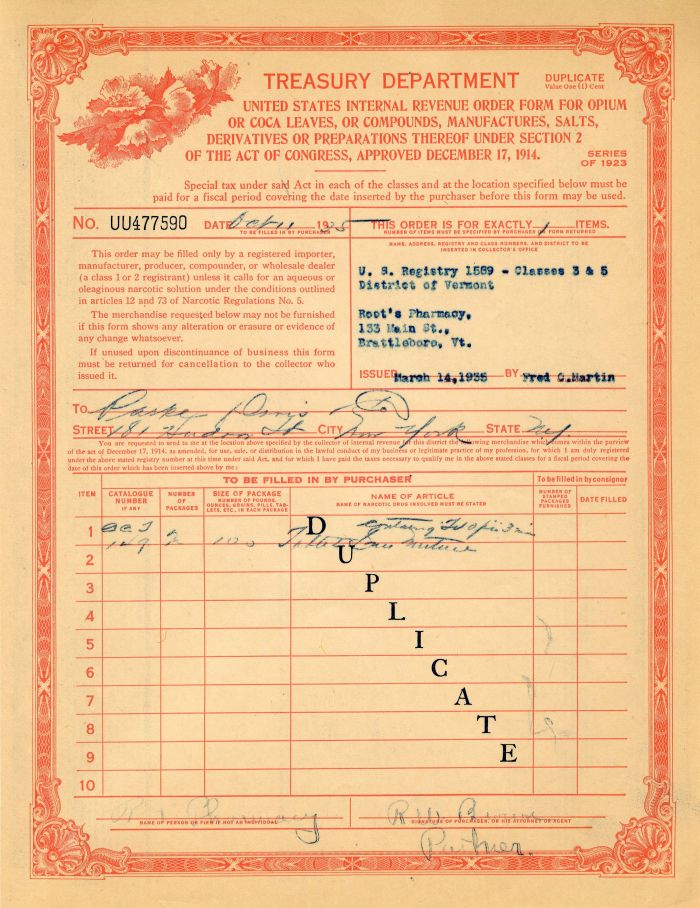Opium-Coca Leaves - 1925 dated United States Official Treasury Department Order
Inv# GS1199A Stock
US Treasury Certificate for ordering 'Opium or coca leaves', etc. Series 1923. Fully issued. Vignette of poppies. Quite rare & unusual!!!
Opium, scientifically referred to as Lachryma papaveris, is a desiccated latex obtained from the seed capsules of the opium poppy (Papaver somniferum). Approximately 12% of opium is composed of morphine, an analgesic alkaloid that undergoes chemical processing to yield heroin and various synthetic opioids utilized for both medicinal and illicit purposes. Additionally, opium contains related opiates such as codeine and thebaine, along with non-analgesic alkaloids like papaverine and noscapine. The traditional technique for harvesting opium involves manually incising the immature seed pods to facilitate the exudation of latex, which subsequently dries into a sticky yellowish substance that is later scraped off and dehydrated. Historically, the term "meconium" was used to describe weaker formulations derived from different parts of the opium poppy or other poppy species, although it is now commonly associated with the stool of newborns.
Coca encompasses any of the four cultivated species within the Erythroxylaceae family, indigenous to western South America. Renowned for its psychoactive alkaloid, cocaine, coca is cultivated as a cash crop in various regions of South America, including the Argentine Northwest, Bolivia, the Alto Rio Negro Territory in Brazil, Colombia, Venezuela, Ecuador, and Peru. Despite its illegal status in certain areas, there are reports of coca being cultivated in southern Mexico using seeds from South America as an alternative to cocaine smuggling. The plant holds considerable significance in the traditional cultures of the Amazon, Andean regions, and the Sierra Nevada de Santa Marta in northern Colombia. The cocaine concentration in dried Erythroxylum coca var. coca leaves varies from 0.23% to 0.96%. Coca-Cola utilized coca leaf extract from 1885 until 1903 but has since transitioned to a decocainized version. The extraction of cocaine from coca necessitates the use of multiple solvents and an acid-base extraction process, which effectively separates the alkaloids from the plant.
A stock certificate is issued by businesses, usually companies. A stock is part of the permanent finance of a business. Normally, they are never repaid, and the investor can recover his/her money only by selling to another investor. Most stocks, or also called shares, earn dividends, at the business's discretion, depending on how well it has traded. A stockholder or shareholder is a part-owner of the business that issued the stock certificates.









Ebay ID: labarre_galleries